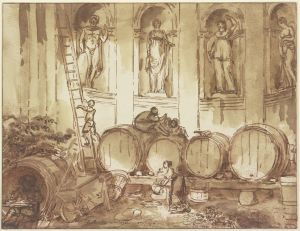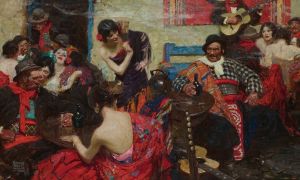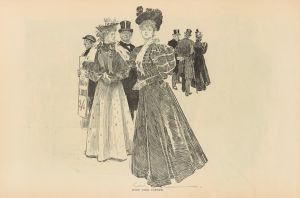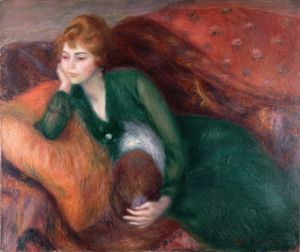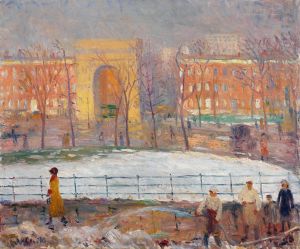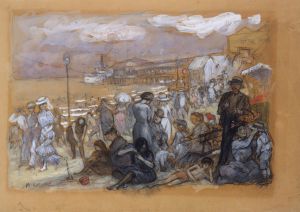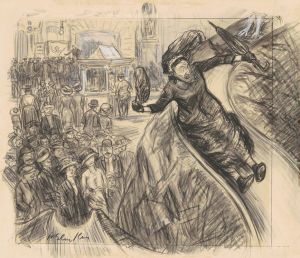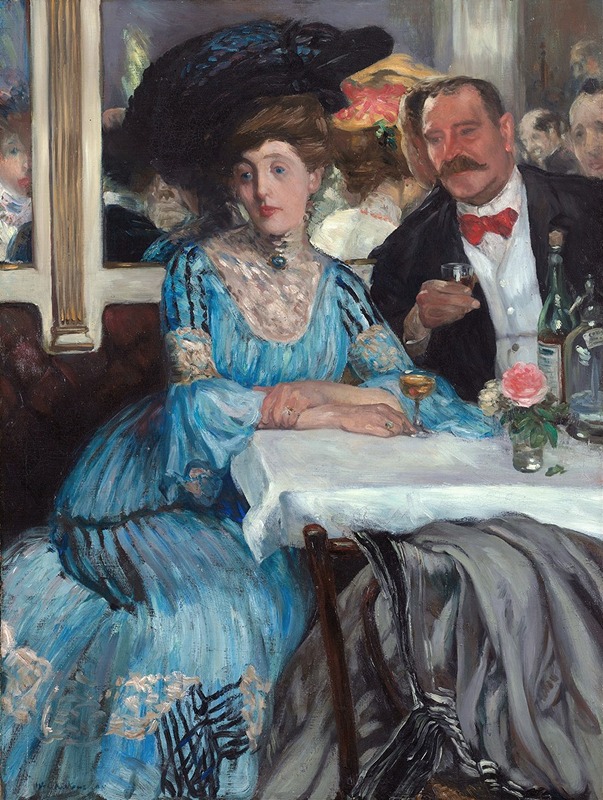
At Mouquin’s
A hand-painted replica of William James Glackens’s masterpiece At Mouquin’s, meticulously crafted by professional artists to capture the true essence of the original. Each piece is created with museum-quality canvas and rare mineral pigments, carefully painted by experienced artists with delicate brushstrokes and rich, layered colors to perfectly recreate the texture of the original artwork. Unlike machine-printed reproductions, this hand-painted version brings the painting to life, infused with the artist’s emotions and skill in every stroke. Whether for personal collection or home decoration, it instantly elevates the artistic atmosphere of any space.
"At Mouquin’s" is a painting by the American artist William James Glackens, completed in 1905. Glackens was a prominent figure in the Ashcan School, a movement known for its focus on depicting scenes of everyday life in New York City during the early 20th century. This painting is one of his most celebrated works and exemplifies his interest in capturing the vibrancy and dynamism of urban life.
The painting portrays a scene inside Mouquin’s, a popular restaurant and gathering place in New York City at the time. The establishment was known for its lively atmosphere and was frequented by artists, writers, and other members of the city's bohemian community. In "At Mouquin’s," Glackens captures the essence of this social hub with a focus on two central figures seated at a table. The man and woman are engaged in conversation, surrounded by the bustling environment of the restaurant.
Glackens' use of color and light in "At Mouquin’s" is notable. He employs a rich palette, with deep reds and warm yellows that convey the warmth and intimacy of the interior setting. The brushwork is loose and expressive, characteristic of Glackens' style, which was influenced by both the Impressionists and his contemporaries in the Ashcan School. This approach allows him to convey the movement and energy of the scene, as well as the personalities of the figures depicted.
The painting is also significant for its composition. Glackens uses a diagonal perspective to draw the viewer's eye into the scene, creating a sense of depth and engagement. The figures are positioned in a way that suggests a narrative, inviting viewers to speculate about their conversation and relationship. This narrative quality is a hallmark of Glackens' work, as he often sought to capture moments of human interaction and emotion.
"At Mouquin’s" reflects Glackens' broader artistic goals of portraying modern life with honesty and vitality. His work often focused on the social and cultural dynamics of urban environments, and this painting is a prime example of his ability to capture the spirit of his time. The painting is housed in the Art Institute of Chicago, where it continues to be appreciated for its historical and artistic significance.
Overall, "At Mouquin’s" is a testament to William Glackens' skill as an artist and his contribution to American art. Through his depiction of a lively New York City scene, Glackens offers a window into the social fabric of the early 20th century, making the painting an enduring piece of cultural history.






